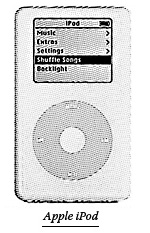November 30, 2004 Simplicity
Over the past year I've been thinking a lot about complexity. Adobe software is highly complex and requires a significant investment of time and resources to fully make use of its power. The products, even the consumer line, were not designed to be used by a computer novice.
But what I've been thinking about isn't necessarily around changing that. It's not about taking Photoshop and making it a three-button application. Solving the problem of complexity is not necessarily about simplification. If you take Photoshop and make it in to a three-button application it is more simple, but it's not a better solution to the problem.
To really solve the complexity problem you need to go through an exercise of distillation. Tackling it from the perspective of a economy of means. Part of the success of the iPod (which is now bringing in 23% of Apple's overall revenue) is that they've limited themselves to just a wheel and five buttons. That economy allows them to think carefully about how things work and relate to each other.

In the software world it is quite difficult to limit yourself to four buttons and wheel. It's just too easy to add another button, add another menu. Google has been trying hard to do this, and for the most part they've been successful. They only have 20-something words on the google.com page, so they must be successful at this. Or are they? Have you clicked the More link off the main page at Google.com? Is that economy of means? Is that distillation? You can sweep things under the rug and most people won't notice, but that's not ideally what you want to be doing.
So why do we do it? Why is a company like Google who began so meticulously at first with the goal of the uncluttered, focused interface now pumping out Froogle, Picasa, Gmail, Orkut, all with inconsistent, unraveling interfaces? Is it really that superficial? Is it really about just having a clean introductory page, and then pushing the complicated mess out to another area? This is a solvable problem, but I suspect the tools we need to solve it are different than the ones we've employed so far.
Software design as a discipline has yet to figure how to keep its greatest asset, the "soft" part of software, from barfing a sea of indescript icons, countless modal dialog boxes and a myriad of Don't Show Again checkboxes all over the place.
Posted by johnnie at November 30, 2004 11:28 AM


